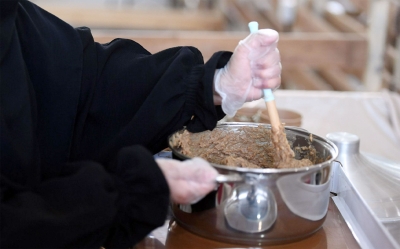
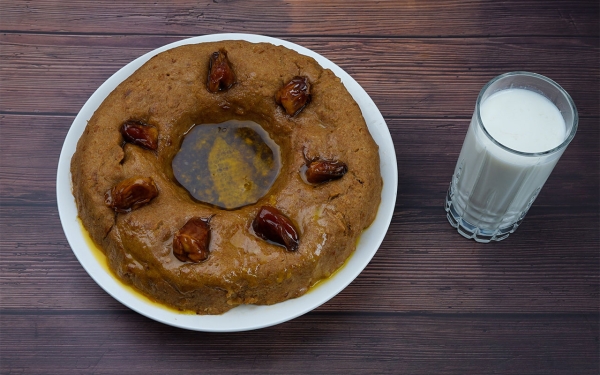
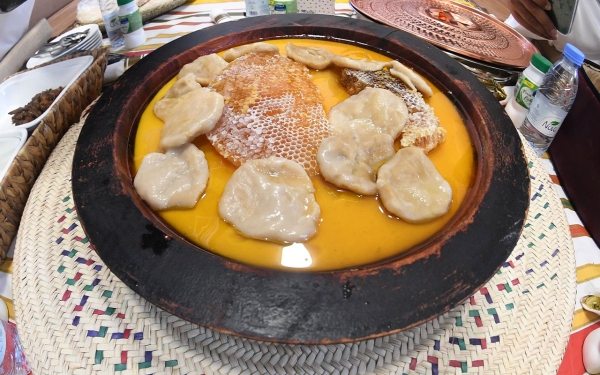
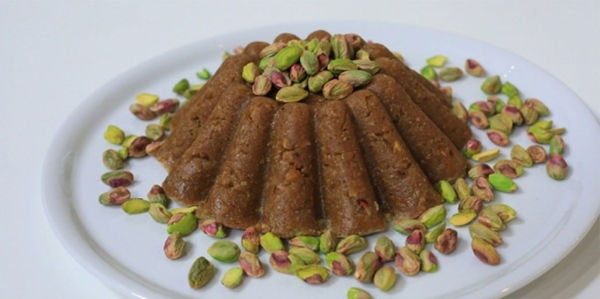
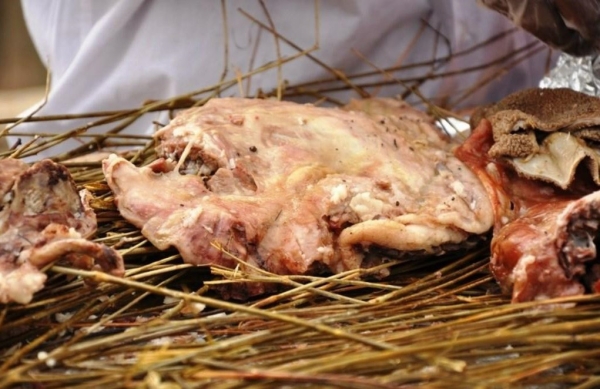
Traditional Food in Aseer Province refers to the most renowned dishes in the cities and towns of Aseer Province, located southwest of the Kingdom of Saudi Arabia. Ingredients used for those dishes, such as ghee, honey, whole wheat, and lamb and goat meat, offer high nutritional values.
Aseer: World Region of Gastronomy 2024
The traditional cuisine of Aseer Province has garnered the attention of international organizations operating in the field of tourism and heritage. This attention contributed to the nomination of Aseer as a global region of gastronomy. The province won the title of the World Region of Gastronomy, granted by the International Institute of Gastronomy, Culture, Arts and Tourism (IGCAT), becoming the first non-European region to win this title. This title is awarded to regions that have joined the platform upon meeting several criteria, including exploring gastronomy across cultural, economic, environmental, and social development sectors, ultimately supporting sustainable regional development.
Traditional dishes in Aseer Province
Aseeda: This dish consists of whole wheat flour cooked until becoming firmly consistent. Some spices can be added to the dish to make it more salty. It is served with broth and milk. It is eaten upon using three fingers of the hand only. The way Aseeda is eaten is different from the one adopted for consuming other dishes. For Aseeda, people grab the morsel, make a hole in the center until the morsel takes the shape of a coffee cup, and then fill it with broth or milk. Despite its simple finish, Aseeda is one of the dishes that require major manual preparation efforts.
Haneeth: It is the most popular traditional dish in Aseer province. It consists of cooking meat on high heat in a utensil known as al-Muhanaz, after heating it. Bundles of sticks retrieved from Aseer's well-known grass, such as Leptadenia and veld grapes, are placed between and over the coal, upon covering the pot with a fabric and placing it in a hole for about two hours until the meat is cooked, ultimately contributing to the elaboration of the distinguished taste of meat. It is served upon pouring salt on the meat, with rice or tannour bread and local honey on the side.
Tannour Mifa Bread: It is the main component of food tables in Aseer and a staple food for most meals. It is prepared by fermenting dough made of whole wheat or wheat for a long period, before shaping longitudinal disks and placing them in the tannour oven, locally known as the Mifa oven (a gas-fired cooking oven that replaced the traditional wood-fired oven). It is served with meat and broth, or with honey and ghee.
Al-Radifah: It is a light traditional dish often prepared for breakfast and dinner. It is named as such since it involves the use of smooth patella stones for its preparation. It is known for its calorie-rich nutritional value. It consists of a combination of ghee, salt, fresh milk, and whole-wheat flour.
Areeka: Aseer Province is known for its Areeka dish, characterized by its ease of preparation and high nutritional value, hence becoming the most ideal breakfast meal. It consists of a fluid dough prepared over a griddle before being served on a plate, surrounded by dates, along with ghee and honey poured upon it.
Tassabi': It is served by the people of Aseer on occasions and celebrations. It consists of milk and flour cooked over heat. The dough is added to the mixture and simmered until cooked. It is served on a plate consisting of al-Rafidah at its center surrounded by Tassabi'. It is eaten with honey.
Al-Mashghootha: It is one of the most popular traditional dishes and one of the most frequently prepared southern dishes during winter. It offers a high-calorie count that supplies the body with energy and warmth. Similarly to most southern dishes, it consists of flour, milk, water, laban, and some salt. It is served with honey, ghee, and dates.
Traditional dishes in Aseer plains
The list of traditional dishes served in the plains of Aseer is distinguished by the dishes 'al-Shidakh' and 'al-Regla'; both consisting of local vegetables cooked together and served as a side dish eaten with Mifa bread. It is known for its distinguished taste and high nutritional value. Another traditional dish is al-Milla dish, consisting of spreading meat over leptadenia and coals, placed upon a flat surface, before spreading another layer of leptadenia and burying the entire mixture in the ground for three hours. Once cooked, salt is poured over the meat to be served with rice.
Ramadan dishes in Aseer Province
During the Holy Month of Ramadan, specific dishes are served during Iftar. These dishes include Haneeth, al-Mashghoutha, Areeka, Marqooq, Jareesh, al-Fahsa, Aseeda, al-Mashraa, Fattah, Korma, Sambousa, Luhaida, meat soup, and al-Futut, also known as al-Makhmoaa, which consists of whole wheat mixed with broth and meat and is one of the most popular dishes during Ramadan. Tassabi' is also served along with as-Suwaiqa, al-Rawani, dolma, al-Suhain, al-Mabthouth, soup, Luqaimat, ghee, laban, and al-Makras.
On the other hand, Mifa bread is among the most preferred types of bread during Ramadan. It is made of whole wheat flour and baked in the Tannour bread oven. Other popular types of bread include millet bread, whole wheat flour seasonal bread, red Khmer bread, and barley bread baked in the Tannour Mifa oven, known for its reddish color, and served with Haneeth and local ghee, and al-Dawh bread. Sobia, made from raisins and barley, as well as al-Halba, flavored with olive, ginger, or chili peppers and served with Lahoh bread, made from white flour and mashed onions, are frequently served during Ramadan, along with other types of beverages, Qishr, al-Sunoot, Basil, and mint-based beverages.
Haneeth: Aseer regional dish
In 2024, the Culinary Arts Commission designated Haneeth as the regional dish of Aseer Province as part of the initiative Narratives of National and Regional Dishes. This initiative, launched in early 2023, identified Jareesh as the national dish of Saudi Arabia and al-Maqshush as the national dessert. The initiative aims to celebrate Saudi culinary culture, document its various recipes, and invest in its symbolic value to promote its dissemination across various social groups locally and internationally, preserving it as an integral part of Saudi Arabia's cultural heritage.
Traditional dishes features in Aseer's festivals and parks
In the entertainment and tourism realm, the products made by productive families are showcased during the events held in Aseer Province and its parks. These products, most notably traditional dishes made by Aseer's women, attract tourists. These include different types of dishes, such as the three types of traditional bread, whole wheat, barley, and corn-based bread, marqooq, and sambousa. Products are displayed on the roadsides of Aseer's parks: al-Soudah, al-Habala, and Dalgan parks, as well as in Prince Sultan Cultural Center in Khamis Mushayt, and Abha Shopping Festival.
Related quizzes
Related articles
